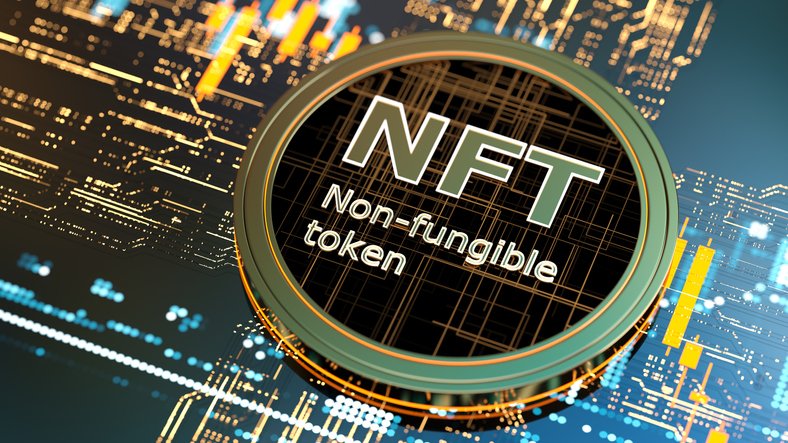Without a question 2021 was the year of Crypto-currencies. Despite the high volatility, the overall sentiment towards Crypto was positive, which eventually led to skyrocketing demand for NFTs, altcoins, and meme coins.
In this article, we will talk about NFTs, how they work? What are they? And why would you even consider paying thousands of dollars for a pixelated 2D image or a piece of land on some virtual city?
Now coming to the question,
what is NFT?
To simply answer your question, NFTs are Non-Fungible Tokens.
That doesn’t make any sense. Right?
Yes! It’s my bad. Non Fungible Tokens are something that is unique and can’t be replaced with something else. The term ‘fungible’ is used, when one can exchange an asset he/she holds with another asset of the same value. Suppose you have $50 and you need to pay two bills of $25 each. As usual, you exchanged that $50 for those two bills thus exchanging the asset with a new same value asset.
However, NFTs are ‘non-fungible’, which makes them unique. As an example, Dali’s paintings are non-fungible. Yes! It is technically possible to copy them, but the original one remains unique and irreplaceable.
Now you may ask why to pay for something that is entirely virtual?
As crypto-currencies are fungible, they can be divided into various smaller units like Wei and Satoshis. However, NFTs are non-fungible and can’t be broken down into smaller units. It consists of unique data, which are rare and very limited in number.
One of the main aspects of NFT is its digital certificates of ownership, which can be bought and sold with the respective artwork that proves the authenticity.
Now you might ask, ‘what’s the big deal?’ ‘I can download the artwork from the internet for free.’
And here you are wrong my friend! You can certainly download as many copies as you like, but copies can never achieve the value and authenticity of the original one.
Are you interested to know, where to buy your first NFTs?
In order to own an NFTs, you need to have a digital wallet to store your Ethereum. Crypto exchanges like Binance, KuCoin, and Coinbase let you create a wallet, which can be connected to the marketplace from where you are planning to buy your first NFT.
Also note, NFT stores are like little auction houses, where many places bid to own a single artwork. With the massive surge in NFT’s demand, finding a marketplace is not so tough. However, we would always encourage you to buy from trustworthy and well-known sites like SuperRare, OpenSea.io, BakerySwap, Axie Marketplace, etc.
Why NFTs are Game Changers for Artists?
There’s a stark difference between art-markets and NFT markets. Most of the NFT artists take at least 10-20% cut from the secondary sales, which means every time the art piece gets sold, a part of the income will go to the artist. This idea is a real novelty and it can change the world of art permanently, and you know the best part? All the sales and transactional data from the NFT sales gets recorded on block chain allowing artists to get their cut automatically.
Can I Create an NFT?
Certainly! Anyone can create an NFT for that matter. You have to turn your own artworks into NFTs on the block chain in order to offer them for sale. This conversion process is called minting.
Once your minting is done, you can put your NFT up for sale on the available NFT marketplaces where you’ll also have to attach your commission so you can continue receiving payments every time your art gets sold. However, the Ethereum block chain is infamous for exorbitant gas fees, which you’ll have to pay as transaction fees.
Clouds of Uncertainty
You might earn a lot from NFT, it may also be very good for creators. However, one of the most worrisome controversies around non-fungible tokens is the carbon footprints that are being created.
Now you might say, how much energy gets consumed by these pixelated art. A very popular NFT named Space Cat’s carbon footprint is equal to an EU resident’s electricity usage for two months, which is quite bad for a GIF of a cat.
In order to keep all the financial records secure, the block chain system forces miners to solve very complex problems using very powerful computers. Solving the problem helps miners to get rewarded by new tokens or transaction fees as result. However, due to the competitiveness of the market, many high-powered computer rigs work for the reward, but only one ends up solving the puzzle, thus earning the reward Robo Forex.
You may ask now, what about the other participants? The answer is, even after burning a lot of energy, if a computer rig fails to solve the puzzle they can’t earn a reward. This makes the process (Proof of Work) incredibly energy inefficient, which in turn is leading to high carbon footprints.
However, with a new mechanism like Proof of Stake, organizations are trying to cut down gas fees and carbon footprints to a massive level. With the POS mechanism, the electricity consumption gets dropped to almost zero, which is beneficial for all the parties involved.
Read about:- LATEST UPDATES IN THE INSURANCE SECTOR












